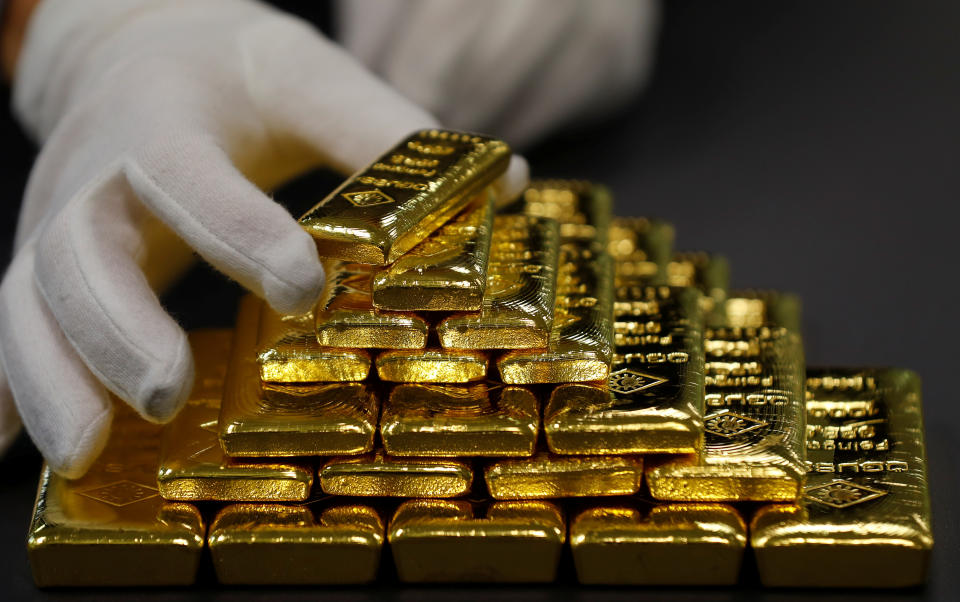'I’m not seeing any flood of money out of gold into cryptos': strategist
The yield curve has inverted and investors are concerned about the threats of tariffs amid the ongoing trade war between the U.S. and China and the overall slowdown of the global economy.
But amid all the turmoil, gold remains a safe haven and it also is still a go-to investment over increasingly popular cryptocurrencies.
“I’m not seeing any flood of money out of gold into cryptos, and if there were, I don’t think the cryptocurrencies would have lost 80% of their value last year,” George Milling-Stanley, State Street Global Advisors’ head of Gold Strategy, told Yahoo Finance On the Move, adding that is what he is hearing from a lot of financial advisors.
“They all seem to have a question about cryptocurrencies because their investors, at whatever demographic, are asking them whether this is a good idea,” he said.
Gold has so far lived up to its safe haven status, according to Milling-Stanley, because it maintains its value “when your stocks and bonds in your portfolio are going down.”
“Gold has managed to maintain its level rather than falling [because of] this general atmosphere of uncertainty that makes people look for safe havens,” he said. “We haven’t seen the collapse in the stock market, that would obviously be helpful for gold prices. The yield curve is giving mixed signals, there seems to be confusion to whether it’s signaling recession or not.”
Gold thrives in volatile environments

Gold prices tend to go up when the stock and bond market go down. To Milling-Stanley “that’s just gravy. What you’re really looking for is something that preserves wealth rather than necessarily creates it.”
He predicts that we will see more volatility in the dollar and especially in the stock market, noting that the fact that stocks have gone up these past nine years has him wary because it’s not expected to continue.
“I’m not saying stocks are going to fall off a cliff, but we’re looking for a lot more volatility this year, and I think that’s in line with most economic views,” he said. “Gold tends to do well when everything else is more volatile.”
When it comes to recession fears, Milling-Stanley argues there isn’t a “strong signal” for worry.
How much should you invest in gold
In making his argument for gold, beyond just a safe-haven asset, Milling-Stanley said its a good long-term investment.
“Over the long-term, gold does give you a reasonable rate of return. Over the last 50 years, for example, gold on a compound annual growth-rate basis has returned 7.5% a year. That’s not too bad at all for an asset that doesn’t have a yield or a coupon.”
When deciding just how much to allocate, Milling-Stanley would recommend 5%. He told Yahoo Finance, “between 2% and10% would make sense as a strategic allocation. If you think we’re about to go into a period of extreme turbulence in markets, a view I happen to hold, then it can make sense to double those allocations.”
All in all, “somewhere between 2% and 20% — personally, I like 5% as a strategic allocation,” he said.
Taylor Locke is a producer for Yahoo Finance On the Move
Read the latest financial and business news from Yahoo Finance
Follow Yahoo Finance on Twitter, Facebook, Instagram, Flipboard, SmartNews, LinkedIn, YouTube, and reddit.

 Yahoo Finance
Yahoo Finance 